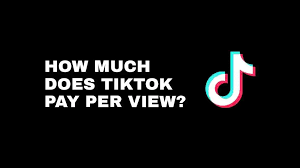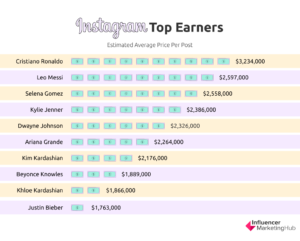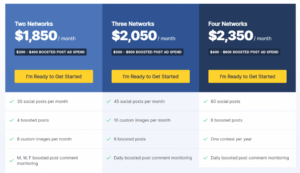In a world where scrolling through social media has become as routine as brushing our teeth, it’s no surprise that businesses are turning to these platforms to reach their target audience.
But have you ever wondered just how much those enticing sponsored posts and flashy ads actually cost? Brace yourself, because today we’re diving deep into the mysterious realm of social media advertising prices.
Buckle up, because you’re about to discover the hidden secrets behind those dollar signs and unlock the key to running successful campaigns without breaking the bank.
Different Platforms:
When it comes to social media advertising, platforms like Facebook, Instagram, and Twitter are at the forefront of the game. Each platform offers unique benefits and advantages when it comes to reaching your target audience effectively.
Facebook provides a vast network of users with detailed targeting options, allowing you to hone in on specific demographics, interests, and behaviors.
With its extensive user base and advanced ad targeting capabilities, Facebook is an excellent platform for businesses looking to increase brand awareness or drive traffic to their websites.
On the other hand, Instagram appeals more strongly to visually-focused brands as its emphasis lies heavily on images and videos.
With over a billion active users worldwide, this platform provides brands with an opportunity to showcase products or services in a visually appealing way while tapping into a younger demographic.
Instagram ads can be seamlessly integrated into users’ feeds and stories without causing too much disruption in their browsing experience.
Twitter boasts a fast-paced environment where short-form content thrives.
This platform allows businesses to share information concisely while engaging directly with their target audience through hashtags and trending topics.
It’s particularly useful if your business targets tech-savvy individuals who value quick updates and real-time conversations.
Each social media platform presents its own set of opportunities for advertisers based on their unique features and user base dynamics.
Understanding these distinctions will help you tailor your ad strategies more effectively according to your business objectives while maximizing your return on investment across various platforms.
Factors Influencing Ad Costs:
When it comes to social media ads, several factors can significantly impact the cost of your campaigns.
Targeting
One crucial factor is targeting. The more specific and tailored your audience is, the higher your ad costs are likely to be.
This is because reaching a smaller and more niche group requires additional effort from the platform’s algorithms, leading to increased bidding pressure on limited advertising space.
Bidding
Bidding strategy also plays a vital role in determining the cost of social media ads. Different platforms offer various bidding options such as cost per click (CPC) or cost per impression (CPM).
Choosing the right bidding strategy that aligns with your campaign goals can either increase or decrease your overall ad costs.
For instance, if you’re looking for immediate website traffic, CPC may be more effective but potentially pricier than CPM-based campaigns focused on brand visibility.
Competition
Finally, competition among advertisers heavily impacts ad costs on social media platforms.
Advertisers competing for similar target audiences in a specific niche drive up prices by increasing demand for impressions and engagements.
In highly competitive markets or industries with a limited customer base and high advertiser interest, expect increased ad costs due to heightened competition.
In conclusion, understanding how targeting strategies influence ad costs while considering different bidding strategies and keeping an eye on industry competition will help you develop a well-calibrated approach to advertising on social media platforms without overspending unnecessarily.
Average Cost Per Click Or Impression
Companies today are increasingly investing in social media advertising to reach a wider audience and generate leads.
Two key metrics used to measure the effectiveness of these campaigns are the average cost per click (CPC) and the average cost per impression (CPM).
The CPC refers to how much advertisers pay for each click on their ads, whereas CPM signifies the cost per thousand impressions.
While both metrics offer valuable insights, it is essential to consider their implications from a marketing standpoint. The average CPC provides marketers with an idea of how much they can expect to spend for each visitor who arrives at their website through a paid ad.
On the other hand, CPM helps gauge how effectively brands can make an impact and create awareness among target audiences, even if those individuals do not take immediate action by clicking on the ad.
Understanding these metrics proves crucial when devising a social media advertising strategy.
Depending on specific marketing goals, businesses might prioritize one metric over the other. For instance, if lead generation is the primary objective, focusing efforts on optimizing CPC might be more effective. Conversely, if brand visibility and recognition matter most, allocating budget toward driving impressions could be wiser in this scenario.
Conclusion:
In conclusion, budgeting and tracking ROI are essential aspects of running successful social media ads campaigns.
By establishing a clear budget upfront, businesses can ensure that they are allocating their resources effectively and efficiently.
This allows them to target the right audience with the right message while avoiding overspending on unnecessary ads.
Moreover, monitoring and tracking ROI not only allows businesses to determine the effectiveness of their social media ad campaigns but also provides valuable insights for future marketing strategies.
By analyzing metrics such as click-through rates, conversions, and customer lifetime value, businesses can identify what is working and what needs improvement.
This enables them to make data-driven decisions that will optimize their advertising efforts and ultimately lead to higher returns on investment.
Understanding the importance of budgeting and tracking ROI is crucial in today’s digital landscape where competition for online attention is fierce.
It not only helps businesses stay accountable for their spending but also ensures that every dollar spent on social media ads contributes positively towards achieving marketing goals.
So, whether you’re a small business or a large corporation, committing to effective budgeting and continuous tracking of ROI will undoubtedly yield significant benefits in maximizing your advertising investments.






Be First to Comment